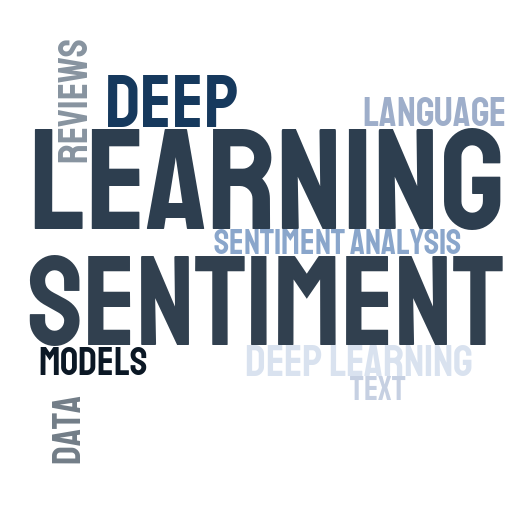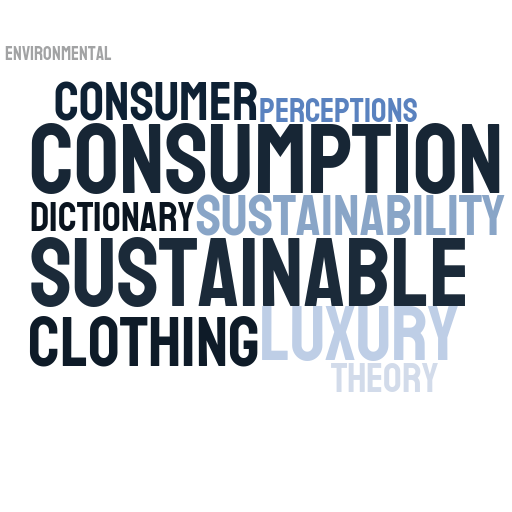Code
library(dplyr)
library(gt)
library(stringr)library(dplyr)
library(gt)
library(stringr)list_articles <- read.csv2("nlp_full_data_final_18-08-2023.csv", encoding = "UTF-8") %>%
rename("entry_number" = 1)
list_references <- read.csv2("nlp_references_final_18-08-2023.csv", encoding = "UTF-8") %>%
rename("citing_art" = 1)
colnames(list_articles) <- gsub("\\.+", "_", colnames(list_articles))
colnames(list_articles) <- gsub("^[[:punct:]]+|[[:punct:]]+$", "", colnames(list_articles))
colnames(list_references) <- gsub("\\.+", "_", colnames(list_references))
colnames(list_references) <- gsub("^[[:punct:]]+|[[:punct:]]+$", "", colnames(list_references))
data_embeddings <- list_articles %>%
distinct(entry_number, .keep_all = TRUE) %>%
filter(marketing == 1) %>%
mutate("year" = substr(prism_coverDate, 7, 10)) %>%
mutate(keywords = str_replace_all(authkeywords, "\\|", "")) %>%
mutate(keywords = str_squish(keywords)) %>%
mutate("combined_text" = paste0(dc_title,". ", dc_description, ". ", keywords))
#write.csv(data_embeddings,"data_for_embeddings.csv")
#data_embeddings <- read.csv("data_for_embeddings.csv")
#embeddings <- read.csv("embeddings_bge.csv")data_embeddings %>%
head(2) %>%
select(entry_number, dc_creator, combined_text, year) %>%
gt()| entry_number | dc_creator | combined_text | year |
|---|---|---|---|
| 1 | Loupos P. | What reviews foretell about opening weekend box office revenue: the harbinger of failure effect in the movie industry. We empirically investigate the harbinger of failure phenomenon in the motion picture industry by analyzing the pre-release reviews written on movies by film critics. We find that harbingers of failure do exist. Their positive (negative) pre-release movie reviews provide a strong predictive signal that the movie will turn out to be a flop (success). This signal persists even for the top critic category, which usually consists of professional critics, indicating that having expertise in a professional domain does not necessarily lead to correct predictions. Our findings challenge the current belief that positive reviews always help enhance box office revenue and shed new light on the influencer-predictor hypothesis. We further analyze the writing style of harbingers and provide new insights into their personality traits and cognitive biases.. Harbingers of failure Movies Preference heterogeneity Reviews Text analytics | 2023 |
| 2 | Krefeld-Schwalb A. | Tighter nets for smaller fishes? Mapping the development of statistical practices in consumer research between 2008 and 2020. During the last decade, confidence in many social sciences, including consumer research, has been undermined by doubts about the replicability of empirical research findings. These doubts have led to increased calls to improve research practices and adopt new measures to increase the replicability of published work from various stakeholders such as funding agencies, journals, and scholars themselves. Despite these demands, it is unclear to which the research published in the leading consumer research journals has adhered to these calls for change. This article provides the first systematic empirical analysis of this question by surveying three crucial statistics of published consumer research over time: sample sizes, effect sizes, and the distribution of published p values. The authors compile a hand-coded sample of N = 258 articles published between 2008 and 2020 in the Journal of Consumer Psychology, the Journal of Consumer Research, and the Journal of Marketing Research. An automated text analysis across all publications in these three journals corroborates the representativeness of the hand-coded sample. Results reveal a substantial increase in sample sizes above and beyond the use of online samples along with a decrease in reported effect sizes. Effect and samples sizes are highly correlated which at least partially explains the reduction in reported effect sizes.. Experimental research methods False-positive results Review | 2023 |
import warnings
warnings.filterwarnings("ignore", message=".*The 'nopython' keyword.*")
import matplotlib.pyplot as plt
import nltk
import numpy as np
import os
import palettable
import pandas as pd
import plotly.express as px
import plotly.io as pio
import string
import stylecloud
import time
import torch
import umap.umap_ as umap
from bertopic import BERTopic
from bertopic.vectorizers import ClassTfidfTransformer
from bertopic.representation import MaximalMarginalRelevance
from gensim.models import Word2Vec
from nltk.corpus import stopwords
from nltk.tokenize import word_tokenize
from palettable import colorbrewer
from sentence_transformers import SentenceTransformer, util
from sklearn.cluster import DBSCAN
from sklearn.decomposition import PCA
from sklearn.feature_extraction.text import CountVectorizer
from sklearn.manifold import TSNE
from sklearn.metrics import davies_bouldin_score, silhouette_score, silhouette_samples
from tabulate import tabulate
from tqdm import tqdm
from transformers import XLNetTokenizer, XLNetModel
from yellowbrick.cluster import SilhouetteVisualizer
from wordcloud import WordCloud
df = pd.read_csv("data_for_embeddings.csv")
#df['title_abstract'] = df['dc_title'].astype(str) + '. ' + df['dc_description'].astype(str)
docs_marketing = df["combined_text"].tolist()print(f"Is CUDA supported by this system? {torch.cuda.is_available()}")Is CUDA supported by this system? Trueprint(f"CUDA version: {torch.version.cuda}")CUDA version: 12.1# Storing ID of the current CUDA device
cuda_id = torch.cuda.current_device()
print(f"ID of the current CUDA device: {cuda_id}")ID of the current CUDA device: 0print(f"Name of the current CUDA device: {torch.cuda.get_device_name(cuda_id)}")Name of the current CUDA device: NVIDIA GeForce RTX 3070We use a CountVectorizer which enables us to specify the range of the ngram we want in our topic model. We can use it before or after the topic modelling (update topic).
Here we use it before the topic modelling to exclude english stopwords, but after the embeddings process so that the foundation provided by stopwords in sentences is preserved in context.
The aim of this function is to swiftly create various BERTopic experiments while maintaining the same parameters, except for the choice of the embedding model. This enables the generation of distinct BERTopic results, facilitating meaningful comparisons among them.
Some explanations:
| Parameter name | Description |
|---|---|
| docs | The documents we want to analyze (list). |
| embeddings_model | Specifies the embeddings model we want to load and use. |
| min_topic_size | It is used to specify what the minimum size of a topic can be. See BERTopic documentation. |
| nr_topics | The number of topics we want to reduce our results to. See BERTopic documentation. |
def create_bertopic(docs, embeddings_model, min_topic_size, nr_topics):
# initialize a count-based tf-idf transformer
ctfidf_model = ClassTfidfTransformer(reduce_frequent_words=True)
# initialize a sentence transformer model for embeddings
sentence_model = SentenceTransformer(embeddings_model, device='cuda')
# generate embeddings for the input documents
embeddings = sentence_model.encode(docs, show_progress_bar=True)
# create the representation model
#representation_model = MaximalMarginalRelevance(diversity=1)
# create a bertopic model with specified parameters
topic_model = BERTopic(
ctfidf_model=ctfidf_model,
calculate_probabilities=True,
verbose=True,
min_topic_size=min_topic_size,
nr_topics=nr_topics,
top_n_words=20
#representation_model=representation_model
)
# fit the bertopic model to the input documents and embeddings
topics, probs = topic_model.fit_transform(docs, embeddings)
# update the vectorizer model used by bertopic
# `min_df` is the minimum document frequency for terms (words or n-grams) in the CountVectorizer.
updated_vectorizer_model = CountVectorizer(stop_words="english", ngram_range=(1, 3), min_df=3)
topic_model.update_topics(docs, vectorizer_model=updated_vectorizer_model)
# return the trained bertopic model
return topic_modelCreates a folder in Images/ with the model_name input with various plots in html files.
def generate_topics_table(topic_model):
# get topic information from the model
topics_info = topic_model.get_topic_info()
# check if topics_info is empty or None
if topics_info is None or topics_info.empty:
return "No topics found."
# convert the data into a list
data_as_list = topics_info.values.tolist()
# get column names as headers
headers = topics_info.columns.tolist()
# generate the table in HTML format
table = tabulate(data_as_list, headers, tablefmt='html')
return table
def visualize_bertopic(topic_model, model_name, nr_topics):
# create the "images" folder if it doesn't exist already
if not os.path.exists("images"):
os.makedirs("images")
# create a subfolder for the specific topic model
model_folder = os.path.join("images", model_name+"-"+str(nr_topics)+"topics")
# create the model folder if it doesn't exist already
if not os.path.exists(model_folder):
os.makedirs(model_folder)
else:
# delete existing files in the model folder if it exists
for file in os.listdir(model_folder):
os.remove(os.path.join(model_folder, file))
# generate topics information table
topics_table = generate_topics_table(topic_model)
with open(os.path.join(model_folder, 'table_topics.html'), 'w') as f:
f.write(topics_table)
# visualize topics
fig_topics = topic_model.visualize_topics()
fig_topics.write_html(os.path.join(model_folder, "topicsinfo.html"))
# visualize hierarchy
fig_hierarchy = topic_model.visualize_hierarchy()
fig_hierarchy.write_html(os.path.join(model_folder, "hierarchy.html"))
# visualize hierarchical topics
hierarchical_topics = topic_model.hierarchical_topics(docs_marketing)
fig_hierarchical_topics = topic_model.visualize_hierarchy(hierarchical_topics=hierarchical_topics)
fig_hierarchical_topics.write_html(os.path.join(model_folder, "hierarchical.html"))
# visualize the bar chart
fig_barchart = topic_model.visualize_barchart(width=300, height=300, n_words=10, topics=None, top_n_topics=20)
fig_barchart.write_html(os.path.join(model_folder, "barchart.html"))
# visualize the heatmap
fig_heatmap = topic_model.visualize_heatmap()
fig_heatmap.write_html(os.path.join(model_folder, "heatmap.html"))
# topics over time
years = df['year'].to_list()
topics_over_time = topic_model.topics_over_time(docs_marketing, years)
fig_topics_over_time = topic_model.visualize_topics_over_time(topics_over_time, top_n_topics=20, normalize_frequency=True)
fig_topics_over_time.write_html(os.path.join(model_folder, "topicsovertime.html"))We must specify the number of topics we want to create (nbtopics) and the minimum number of documents to form a topic (nbmintopicsize).
#09/26/2023 -----------------------------------------
#to-do clean code : embeddings are charged twice for viz purposes (document viz) because it is loaded a first time in the create_bertopic function and again in the loop (can't use just the model name in visualize_bertopic function.)
#---------------------------------------------------
# list of embeddings models
list_embeddings = ["all-mpnet-base-v2"]
#list_embeddings = ["all-mpnet-base-v2","multi-qa-mpnet-base-dot-v1","all-roberta-large-v1","all-MiniLM-L12-v2"]
# create a list to store model information
table_data = []
topic_models = {}
#nbtopics is the number of topics we want to create/reduce to
#nbmintopicsize is the minimum number of documents to form a topic
nbtopics = 17
nbmintopicsize = 5
# loop through the list of embeddings models and create topic_model + viz in images
for embeddings_model in list_embeddings:
print(f"\nCreating BERTopics with the {embeddings_model} Sentence-Transformers pretrained model.")
topic_model = create_bertopic(docs_marketing, embeddings_model, nbmintopicsize, nbtopics)
print(f"\nCreating BERTopic visualizations in the `images\\{embeddings_model}-{nbtopics}topics` folder.")
visualize_bertopic(topic_model, embeddings_model, nbtopics)
chargedmodel = SentenceTransformer(embeddings_model, device='cuda')
# visualize the documents
model_folder = os.path.join("images", embeddings_model+"-"+str(nbtopics)+"topics")
embeddings = chargedmodel.encode(docs_marketing, show_progress_bar=False)
fig_documents = topic_model.visualize_documents(docs_marketing, embeddings=embeddings)
fig_documents.write_html(os.path.join(model_folder, "documents_topics.html"))
# to summarize embeddings' models
dimensions = chargedmodel.get_sentence_embedding_dimension()
max_tokens = chargedmodel.max_seq_length
# store the topic_model in the dictionary with the embeddings name as key
topic_models[embeddings_model] = topic_model
# add model information to the table data list
table_data.append([embeddings_model, dimensions, max_tokens])
Creating BERTopics with the all-mpnet-base-v2 Sentence-Transformers pretrained model.
Creating BERTopic visualizations in the `images\all-mpnet-base-v2-17topics` folder.
Batches: 0%| | 0/13 [00:00<?, ?it/s]
Batches: 8%|7 | 1/13 [00:00<00:09, 1.29it/s]
Batches: 15%|#5 | 2/13 [00:01<00:07, 1.49it/s]
Batches: 23%|##3 | 3/13 [00:01<00:06, 1.67it/s]
Batches: 31%|### | 4/13 [00:02<00:05, 1.78it/s]
Batches: 38%|###8 | 5/13 [00:02<00:04, 1.94it/s]
Batches: 46%|####6 | 6/13 [00:02<00:03, 2.04it/s]
Batches: 54%|#####3 | 7/13 [00:03<00:02, 2.29it/s]
Batches: 62%|######1 | 8/13 [00:03<00:01, 2.66it/s]
Batches: 69%|######9 | 9/13 [00:03<00:01, 3.08it/s]
Batches: 77%|#######6 | 10/13 [00:03<00:00, 3.47it/s]
Batches: 85%|########4 | 11/13 [00:04<00:00, 3.86it/s]
Batches: 92%|#########2| 12/13 [00:04<00:00, 4.46it/s]
Batches: 100%|##########| 13/13 [00:04<00:00, 3.01it/s]
2023-10-04 17:06:54,764 - BERTopic - Reduced dimensionality
2023-10-04 17:06:54,798 - BERTopic - Clustered reduced embeddings
2023-10-04 17:06:55,034 - BERTopic - Reduced number of topics from 18 to 17
0%| | 0/15 [00:00<?, ?it/s]
100%|##########| 15/15 [00:00<00:00, 295.69it/s]
0it [00:00, ?it/s]
14it [00:00, 129.70it/s]
19it [00:00, 79.92it/s]
21it [00:00, 69.00it/s]# table headers
headers = ["Embeddings Model", "Dimensions", "Max Tokens"]
# title for the table, centered
table_title = "Summary of Embeddings Models used"
# create the table with centered title
table = tabulate(table_data, headers, tablefmt="pretty")
table_lines = table.split("\n")
table_lines.insert(0, table_title.center(len(table_lines[0])))
table_with_centered_title = "\n".join(table_lines)
# display the table with centered title
print("\n")print(table_with_centered_title) Summary of Embeddings Models used
+-------------------+------------+------------+
| Embeddings Model | Dimensions | Max Tokens |
+-------------------+------------+------------+
| all-mpnet-base-v2 | 768 | 384 |
+-------------------+------------+------------+
#sentence_model.max_seq_length
#sentence_model.get_sentence_embedding_dimension()# we can access the different topic models like this
embeddings_model_name = "all-mpnet-base-v2"
topics_list = topic_models[embeddings_model_name].topics_
# len(topic_models[embeddings_model_name].probabilities_) # = 405 like the docs_marketings
# len(topic_models[embeddings_model_name].topics_) # = 405 like the docs_marketings
# type(topic_models[embeddings_model_name].topics_) # list
# put the topics' number in the df of marketing documents
df["topic"] = topics_list
# get the correspondence between topic number and topic name
topic_info_df = topic_models[embeddings_model_name].get_topic_info()
selected_columns = topic_info_df[["Topic", "Name"]]
topic_info_df Topic ... Representative_Docs
0 -1 ... [An Artificial Intelligence Method for the Ana...
1 0 ... [Differences in Online Review Content between ...
2 1 ... [Young People Under ‘Finfluencer’: The Rise of...
3 2 ... [A Scientometric Analysis of Publications in t...
4 3 ... [Building a sustainable brand image in luxury ...
5 4 ... [A machine-learning based approach to measurin...
6 5 ... [What’s yours is mine: exploring customer voic...
7 6 ... [Should We Continue Using Intelligent Virtual ...
8 7 ... [Using text mining to track changes in travel ...
9 8 ... [Automated marketing research using online cus...
10 9 ... [Deep Learning Applications for Interactive Ma...
11 10 ... [Exploring mobile banking service quality dime...
12 11 ... [Disclosure of Brand-Related Information and F...
13 12 ... [Exploring customer concerns on service qualit...
14 13 ... [Wordify: A Tool for Discovering and Different...
15 14 ... [Understanding retail quality of sporting good...
16 15 ... [Using AI predicted personality to enhance adv...
[17 rows x 5 columns]df["topic_name"] = df["topic"].map(selected_columns.set_index("Topic")["Name"])
# Calculate the count and percentage of each topic
topic_counts = df["topic_name"].value_counts().reset_index()
topic_counts.columns = ["topic_name", "count"]
topic_counts["percentage"] = (topic_counts["count"] / sum(topic_counts['count'])) * 100
# Add "(outliers)" to the name of the first topic of topic_counts
topic_counts.iloc[0, 0] = "<b>(outliers)</b> " + topic_counts.iloc[0, 0]
if 'figdistrib' not in globals():
figdistrib = px.bar(topic_counts, x="topic_name", y="percentage", title="Distribution of Topics Among Articles",
hover_data=["count"])
figdistrib.update_layout(template="plotly_white")
# Some aesthetics on the graph
figdistrib.update_xaxes(title_text="BERTopics")
figdistrib.update_yaxes(title_text="Percentage of articles")
figdistrib.update_traces(marker_color="rgb(158,202,225)", marker_line_color="rgb(8,48,107)", marker_line_width=1.5, opacity=0.6)
figdistrib.update_layout(title_x=0.5, title_xanchor="center")
#figdistrib.show()# Creates dataframe from Series
topic_counts_no_outliers = df["topic_name"].value_counts().reset_index()
# Excluding the first row (outliers) from topic_counts
topic_counts_no_outliers = topic_counts_no_outliers.iloc[1:]
# Calculate the count and percentage of each topic without considering outliers
topic_counts_no_outliers.columns = ["topic_name", "count"]
topic_counts_no_outliers["percentage"] = (topic_counts_no_outliers["count"] / sum(topic_counts_no_outliers['count'])) * 100
if 'figdistrib2' not in globals():
figdistrib2 = px.bar(topic_counts_no_outliers, x="topic_name", y="percentage", title="Distribution of Topics Among Articles",
hover_data=["count"])
figdistrib2.update_layout(template="plotly_white")
# Some aesthetics on the graph
figdistrib2.update_xaxes(title_text="BERTopics")
figdistrib2.update_yaxes(title_text="Percentage of articles")
figdistrib2.update_traces(marker_color="rgb(158,202,225)", marker_line_color="rgb(8,48,107)", marker_line_width=1.5, opacity=0.6)
figdistrib2.update_layout(title_x=0.5, title_xanchor="center")
#figdistrib.show()We can do it by selecting a sentence in the document. To do so, we need to first calculate topic distributions on a token level and then visualize the results:
More parameters here :
https://maartengr.github.io/BERTopic/getting_started/distribution/distribution.html
Here, we take the most cited article as an example.
# Calculate the topic distributions on a token-level for the all-mpnet-base-v2 model, we can add the window
topic_distr, topic_token_distr = topic_models["all-mpnet-base-v2"].approximate_distribution(docs_marketing, calculate_tokens=True)
0%| | 0/1 [00:00<?, ?it/s]
100%|##########| 1/1 [00:01<00:00, 1.26s/it]# Visualize the token-level distributions, put id of document
df_topicmodel = topic_models["all-mpnet-base-v2"].visualize_approximate_distribution(docs_marketing[382], topic_token_distr[382])
df_topicmodel| Mine | your | own | business | Market | structure | surveillance | through | text | mining | Web | provides | gathering | places | for | Internet | users | in | blogs | forums | and | chat | rooms | These | gathering | places | leave | footprints | in | the | form | of | colossal | amounts | of | data | regarding | consumers | thoughts | beliefs | experiences | and | even | interactions | In | this | paper | we | propose | an | approach | for | firms | to | explore | online | user | generated | content | and | listen | to | what | customers | write | about | their | and | their | competitors | products | Our | objective | is | to | convert | the | user | generated | content | to | market | structures | and | competitive | landscape | insights | The | difficulty | in | obtaining | such | market | structure | insights | from | online | user | generated | content | is | that | consumers | postings | are | often | not | easy | to | syndicate | To | address | these | issues | we | employ | text | mining | approach | and | combine | it | with | semantic | network | analysis | tools | We | demonstrate | this | approach | using | two | cases | sedan | cars | and | diabetes | drugs | generating | market | structure | perceptual | maps | and | meaningful | insights | without | interviewing | single | consumer | We | compare | market | structure | based | on | user | generated | content | data | with | market | structure | derived | from | more | traditional | sales | and | survey | based | data | to | establish | validity | and | highlight | meaningful | differences | 2012 | INFORMS | Market | structure | Marketing | research | Text | mining | User | generated | content | |
|---|---|---|---|---|---|---|---|---|---|---|---|---|---|---|---|---|---|---|---|---|---|---|---|---|---|---|---|---|---|---|---|---|---|---|---|---|---|---|---|---|---|---|---|---|---|---|---|---|---|---|---|---|---|---|---|---|---|---|---|---|---|---|---|---|---|---|---|---|---|---|---|---|---|---|---|---|---|---|---|---|---|---|---|---|---|---|---|---|---|---|---|---|---|---|---|---|---|---|---|---|---|---|---|---|---|---|---|---|---|---|---|---|---|---|---|---|---|---|---|---|---|---|---|---|---|---|---|---|---|---|---|---|---|---|---|---|---|---|---|---|---|---|---|---|---|---|---|---|---|---|---|---|---|---|---|---|---|---|---|---|---|---|---|---|---|---|---|---|---|---|---|---|---|---|---|---|---|---|---|---|---|---|---|---|---|---|---|---|---|---|---|
| 0_reviews_online_review_product | 0.000 | 0.000 | 0.000 | 0.000 | 0.000 | 0.000 | 0.125 | 0.125 | 0.125 | 0.125 | 0.000 | 0.000 | 0.000 | 0.000 | 0.000 | 0.000 | 0.000 | 0.000 | 0.000 | 0.000 | 0.000 | 0.000 | 0.000 | 0.000 | 0.000 | 0.000 | 0.000 | 0.000 | 0.000 | 0.000 | 0.000 | 0.000 | 0.000 | 0.000 | 0.000 | 0.000 | 0.000 | 0.000 | 0.000 | 0.000 | 0.000 | 0.000 | 0.000 | 0.000 | 0.000 | 0.000 | 0.000 | 0.000 | 0.000 | 0.000 | 0.000 | 0.000 | 0.000 | 0.000 | 0.000 | 0.000 | 0.000 | 0.000 | 0.120 | 0.120 | 0.120 | 0.120 | 0.000 | 0.000 | 0.000 | 0.000 | 0.000 | 0.000 | 0.000 | 0.000 | 0.000 | 0.000 | 0.000 | 0.000 | 0.000 | 0.000 | 0.000 | 0.000 | 0.000 | 0.000 | 0.000 | 0.000 | 0.000 | 0.000 | 0.000 | 0.000 | 0.000 | 0.000 | 0.000 | 0.000 | 0.000 | 0.000 | 0.000 | 0.106 | 0.209 | 0.209 | 0.209 | 0.103 | 0.000 | 0.167 | 0.167 | 0.167 | 0.167 | 0.000 | 0.000 | 0.000 | 0.000 | 0.000 | 0.000 | 0.000 | 0.000 | 0.000 | 0.000 | 0.000 | 0.000 | 0.000 | 0.000 | 0.000 | 0.000 | 0.000 | 0.000 | 0.000 | 0.000 | 0.000 | 0.000 | 0.000 | 0.000 | 0.000 | 0.000 | 0.000 | 0.000 | 0.000 | 0.000 | 0.000 | 0.000 | 0.000 | 0.000 | 0.000 | 0.000 | 0.000 | 0.000 | 0.000 | 0.000 | 0.000 | 0.000 | 0.000 | 0.000 | 0.000 | 0.000 | 0.000 | 0.000 | 0.000 | 0.000 | 0.000 | 0.000 | 0.000 | 0.000 | 0.000 | 0.000 | 0.000 | 0.000 | 0.000 | 0.000 | 0.000 | 0.000 | 0.000 | 0.000 | 0.000 | 0.000 | 0.000 | 0.000 | 0.000 | 0.000 | 0.000 | 0.000 | 0.000 | 0.000 | 0.000 | 0.000 | 0.000 | 0.000 | 0.000 | 0.000 | 0.000 | 0.000 | 0.000 | 0.000 | 0.000 | 0.000 | 0.000 | 0.000 |
| 1_engagement_media_social media_social | 0.000 | 0.000 | 0.000 | 0.000 | 0.000 | 0.000 | 0.000 | 0.112 | 0.213 | 0.213 | 0.213 | 0.100 | 0.000 | 0.000 | 0.000 | 0.000 | 0.000 | 0.000 | 0.000 | 0.000 | 0.000 | 0.000 | 0.000 | 0.000 | 0.000 | 0.000 | 0.000 | 0.000 | 0.000 | 0.000 | 0.000 | 0.000 | 0.000 | 0.000 | 0.000 | 0.000 | 0.000 | 0.000 | 0.000 | 0.000 | 0.000 | 0.000 | 0.000 | 0.000 | 0.000 | 0.000 | 0.000 | 0.000 | 0.000 | 0.000 | 0.000 | 0.000 | 0.000 | 0.000 | 0.000 | 0.000 | 0.000 | 0.000 | 0.143 | 0.143 | 0.143 | 0.143 | 0.000 | 0.000 | 0.000 | 0.000 | 0.000 | 0.000 | 0.000 | 0.000 | 0.000 | 0.000 | 0.000 | 0.000 | 0.000 | 0.000 | 0.000 | 0.000 | 0.000 | 0.000 | 0.000 | 0.000 | 0.000 | 0.000 | 0.000 | 0.000 | 0.000 | 0.000 | 0.000 | 0.000 | 0.000 | 0.000 | 0.000 | 0.000 | 0.000 | 0.000 | 0.000 | 0.000 | 0.000 | 0.190 | 0.190 | 0.190 | 0.190 | 0.000 | 0.000 | 0.000 | 0.000 | 0.000 | 0.000 | 0.000 | 0.000 | 0.000 | 0.000 | 0.000 | 0.000 | 0.000 | 0.000 | 0.000 | 0.000 | 0.000 | 0.000 | 0.000 | 0.000 | 0.000 | 0.000 | 0.000 | 0.000 | 0.000 | 0.000 | 0.000 | 0.000 | 0.000 | 0.000 | 0.000 | 0.000 | 0.000 | 0.000 | 0.000 | 0.000 | 0.000 | 0.000 | 0.000 | 0.000 | 0.000 | 0.000 | 0.000 | 0.000 | 0.000 | 0.000 | 0.000 | 0.000 | 0.000 | 0.000 | 0.000 | 0.000 | 0.000 | 0.000 | 0.000 | 0.000 | 0.000 | 0.000 | 0.000 | 0.000 | 0.000 | 0.000 | 0.000 | 0.000 | 0.000 | 0.000 | 0.000 | 0.000 | 0.000 | 0.000 | 0.000 | 0.000 | 0.000 | 0.000 | 0.000 | 0.000 | 0.000 | 0.000 | 0.000 | 0.000 | 0.000 | 0.000 | 0.000 | 0.000 | 0.000 | 0.000 | 0.000 | 0.000 |
| 2_research_marketing_journal_consumer | 0.126 | 0.247 | 0.247 | 0.247 | 0.121 | 0.000 | 0.158 | 0.281 | 0.409 | 0.409 | 0.251 | 0.128 | 0.000 | 0.000 | 0.000 | 0.000 | 0.000 | 0.000 | 0.000 | 0.000 | 0.000 | 0.000 | 0.000 | 0.000 | 0.000 | 0.000 | 0.000 | 0.000 | 0.000 | 0.000 | 0.000 | 0.000 | 0.000 | 0.000 | 0.000 | 0.000 | 0.000 | 0.000 | 0.000 | 0.000 | 0.000 | 0.000 | 0.000 | 0.000 | 0.000 | 0.000 | 0.000 | 0.000 | 0.000 | 0.000 | 0.000 | 0.000 | 0.000 | 0.000 | 0.000 | 0.000 | 0.000 | 0.000 | 0.000 | 0.000 | 0.000 | 0.000 | 0.000 | 0.000 | 0.000 | 0.000 | 0.000 | 0.000 | 0.000 | 0.000 | 0.000 | 0.000 | 0.000 | 0.000 | 0.000 | 0.000 | 0.000 | 0.000 | 0.000 | 0.000 | 0.000 | 0.000 | 0.000 | 0.000 | 0.000 | 0.000 | 0.000 | 0.000 | 0.000 | 0.000 | 0.000 | 0.000 | 0.000 | 0.000 | 0.000 | 0.000 | 0.000 | 0.000 | 0.000 | 0.000 | 0.000 | 0.000 | 0.000 | 0.000 | 0.000 | 0.000 | 0.000 | 0.000 | 0.000 | 0.000 | 0.000 | 0.000 | 0.000 | 0.000 | 0.000 | 0.000 | 0.000 | 0.000 | 0.000 | 0.000 | 0.000 | 0.000 | 0.000 | 0.000 | 0.000 | 0.000 | 0.000 | 0.000 | 0.000 | 0.000 | 0.000 | 0.000 | 0.000 | 0.000 | 0.000 | 0.000 | 0.000 | 0.000 | 0.000 | 0.000 | 0.000 | 0.000 | 0.000 | 0.000 | 0.000 | 0.000 | 0.000 | 0.000 | 0.000 | 0.000 | 0.000 | 0.000 | 0.000 | 0.000 | 0.000 | 0.000 | 0.000 | 0.000 | 0.000 | 0.000 | 0.000 | 0.000 | 0.000 | 0.000 | 0.000 | 0.000 | 0.000 | 0.000 | 0.000 | 0.000 | 0.000 | 0.000 | 0.000 | 0.000 | 0.000 | 0.000 | 0.000 | 0.000 | 0.000 | 0.000 | 0.000 | 0.000 | 0.166 | 0.343 | 0.530 | 0.530 | 0.364 | 0.187 | 0.000 | 0.000 | 0.000 |
| 3_brand_luxury_fashion_brands | 0.000 | 0.000 | 0.000 | 0.000 | 0.000 | 0.000 | 0.147 | 0.262 | 0.366 | 0.366 | 0.219 | 0.104 | 0.000 | 0.000 | 0.000 | 0.000 | 0.000 | 0.000 | 0.000 | 0.000 | 0.000 | 0.000 | 0.000 | 0.000 | 0.000 | 0.000 | 0.000 | 0.000 | 0.000 | 0.000 | 0.000 | 0.000 | 0.000 | 0.000 | 0.000 | 0.000 | 0.000 | 0.000 | 0.000 | 0.000 | 0.000 | 0.000 | 0.000 | 0.000 | 0.000 | 0.000 | 0.000 | 0.000 | 0.000 | 0.000 | 0.000 | 0.000 | 0.000 | 0.000 | 0.000 | 0.000 | 0.000 | 0.000 | 0.000 | 0.000 | 0.000 | 0.000 | 0.000 | 0.000 | 0.000 | 0.000 | 0.000 | 0.000 | 0.000 | 0.000 | 0.000 | 0.000 | 0.000 | 0.000 | 0.000 | 0.000 | 0.000 | 0.000 | 0.000 | 0.000 | 0.000 | 0.000 | 0.000 | 0.000 | 0.000 | 0.000 | 0.000 | 0.000 | 0.000 | 0.000 | 0.000 | 0.000 | 0.000 | 0.000 | 0.000 | 0.000 | 0.000 | 0.000 | 0.000 | 0.102 | 0.102 | 0.102 | 0.102 | 0.000 | 0.000 | 0.000 | 0.000 | 0.000 | 0.000 | 0.000 | 0.000 | 0.000 | 0.000 | 0.000 | 0.000 | 0.000 | 0.116 | 0.116 | 0.116 | 0.116 | 0.000 | 0.000 | 0.000 | 0.000 | 0.000 | 0.000 | 0.000 | 0.000 | 0.000 | 0.000 | 0.000 | 0.000 | 0.000 | 0.000 | 0.000 | 0.000 | 0.000 | 0.000 | 0.000 | 0.000 | 0.000 | 0.000 | 0.000 | 0.000 | 0.000 | 0.000 | 0.000 | 0.000 | 0.000 | 0.000 | 0.000 | 0.000 | 0.000 | 0.000 | 0.000 | 0.000 | 0.000 | 0.000 | 0.000 | 0.110 | 0.110 | 0.110 | 0.110 | 0.000 | 0.000 | 0.000 | 0.000 | 0.000 | 0.000 | 0.000 | 0.000 | 0.000 | 0.000 | 0.000 | 0.000 | 0.000 | 0.000 | 0.000 | 0.000 | 0.000 | 0.000 | 0.000 | 0.000 | 0.000 | 0.000 | 0.000 | 0.000 | 0.000 | 0.000 | 0.000 | 0.000 |
| 4_marketing_data_text_analysis | 0.000 | 0.000 | 0.000 | 0.000 | 0.000 | 0.127 | 0.372 | 0.553 | 0.731 | 0.604 | 0.360 | 0.178 | 0.000 | 0.000 | 0.000 | 0.000 | 0.000 | 0.000 | 0.000 | 0.000 | 0.000 | 0.000 | 0.000 | 0.000 | 0.000 | 0.000 | 0.000 | 0.000 | 0.000 | 0.000 | 0.000 | 0.000 | 0.000 | 0.000 | 0.116 | 0.116 | 0.116 | 0.116 | 0.000 | 0.000 | 0.000 | 0.000 | 0.000 | 0.000 | 0.000 | 0.000 | 0.000 | 0.000 | 0.000 | 0.000 | 0.000 | 0.000 | 0.000 | 0.000 | 0.000 | 0.000 | 0.000 | 0.000 | 0.000 | 0.000 | 0.000 | 0.000 | 0.000 | 0.000 | 0.000 | 0.000 | 0.000 | 0.000 | 0.000 | 0.000 | 0.000 | 0.000 | 0.000 | 0.000 | 0.000 | 0.000 | 0.000 | 0.000 | 0.000 | 0.000 | 0.000 | 0.000 | 0.000 | 0.000 | 0.000 | 0.000 | 0.000 | 0.000 | 0.000 | 0.000 | 0.000 | 0.000 | 0.000 | 0.000 | 0.000 | 0.000 | 0.000 | 0.000 | 0.000 | 0.000 | 0.000 | 0.000 | 0.000 | 0.000 | 0.000 | 0.000 | 0.000 | 0.000 | 0.000 | 0.000 | 0.000 | 0.000 | 0.000 | 0.000 | 0.000 | 0.000 | 0.137 | 0.137 | 0.137 | 0.137 | 0.000 | 0.000 | 0.117 | 0.236 | 0.236 | 0.236 | 0.119 | 0.000 | 0.000 | 0.000 | 0.000 | 0.000 | 0.000 | 0.000 | 0.000 | 0.000 | 0.000 | 0.000 | 0.000 | 0.000 | 0.000 | 0.000 | 0.000 | 0.000 | 0.000 | 0.000 | 0.000 | 0.000 | 0.000 | 0.000 | 0.000 | 0.000 | 0.000 | 0.000 | 0.000 | 0.000 | 0.000 | 0.000 | 0.000 | 0.201 | 0.304 | 0.304 | 0.304 | 0.103 | 0.000 | 0.000 | 0.000 | 0.000 | 0.000 | 0.135 | 0.271 | 0.374 | 0.482 | 0.347 | 0.211 | 0.108 | 0.000 | 0.000 | 0.000 | 0.000 | 0.000 | 0.000 | 0.122 | 0.285 | 0.456 | 0.456 | 0.333 | 0.171 | 0.000 | 0.000 | 0.000 |
| 5_hotel_service_reviews_online | 0.000 | 0.000 | 0.000 | 0.000 | 0.000 | 0.000 | 0.137 | 0.241 | 0.345 | 0.345 | 0.208 | 0.103 | 0.000 | 0.000 | 0.000 | 0.000 | 0.000 | 0.000 | 0.000 | 0.000 | 0.000 | 0.000 | 0.000 | 0.000 | 0.000 | 0.000 | 0.000 | 0.000 | 0.000 | 0.000 | 0.000 | 0.000 | 0.000 | 0.000 | 0.000 | 0.000 | 0.000 | 0.000 | 0.000 | 0.000 | 0.112 | 0.112 | 0.112 | 0.112 | 0.000 | 0.000 | 0.000 | 0.000 | 0.000 | 0.000 | 0.000 | 0.000 | 0.000 | 0.000 | 0.000 | 0.000 | 0.000 | 0.000 | 0.000 | 0.000 | 0.124 | 0.124 | 0.124 | 0.124 | 0.000 | 0.000 | 0.000 | 0.000 | 0.000 | 0.000 | 0.000 | 0.000 | 0.000 | 0.000 | 0.000 | 0.000 | 0.000 | 0.000 | 0.000 | 0.000 | 0.000 | 0.000 | 0.000 | 0.000 | 0.000 | 0.000 | 0.000 | 0.000 | 0.000 | 0.000 | 0.000 | 0.000 | 0.000 | 0.000 | 0.106 | 0.106 | 0.106 | 0.106 | 0.000 | 0.000 | 0.000 | 0.000 | 0.000 | 0.000 | 0.000 | 0.000 | 0.000 | 0.000 | 0.000 | 0.000 | 0.000 | 0.000 | 0.000 | 0.000 | 0.000 | 0.000 | 0.101 | 0.101 | 0.101 | 0.101 | 0.000 | 0.000 | 0.000 | 0.000 | 0.000 | 0.000 | 0.000 | 0.000 | 0.000 | 0.000 | 0.000 | 0.000 | 0.000 | 0.000 | 0.000 | 0.000 | 0.000 | 0.000 | 0.000 | 0.000 | 0.000 | 0.000 | 0.000 | 0.000 | 0.000 | 0.000 | 0.000 | 0.000 | 0.000 | 0.000 | 0.000 | 0.000 | 0.000 | 0.000 | 0.000 | 0.000 | 0.000 | 0.000 | 0.000 | 0.000 | 0.000 | 0.000 | 0.000 | 0.000 | 0.000 | 0.000 | 0.000 | 0.000 | 0.000 | 0.000 | 0.000 | 0.000 | 0.000 | 0.000 | 0.000 | 0.000 | 0.000 | 0.000 | 0.000 | 0.000 | 0.000 | 0.000 | 0.000 | 0.000 | 0.000 | 0.000 | 0.000 | 0.000 | 0.000 | 0.000 | 0.000 |
| 6_ai_intelligence_artificial_artificial intelligence | 0.000 | 0.000 | 0.000 | 0.000 | 0.000 | 0.000 | 0.000 | 0.000 | 0.000 | 0.000 | 0.000 | 0.000 | 0.000 | 0.000 | 0.000 | 0.000 | 0.000 | 0.000 | 0.000 | 0.000 | 0.000 | 0.000 | 0.000 | 0.000 | 0.000 | 0.000 | 0.000 | 0.000 | 0.000 | 0.000 | 0.000 | 0.000 | 0.000 | 0.000 | 0.000 | 0.000 | 0.000 | 0.000 | 0.000 | 0.000 | 0.000 | 0.000 | 0.000 | 0.000 | 0.000 | 0.000 | 0.000 | 0.000 | 0.000 | 0.000 | 0.000 | 0.000 | 0.000 | 0.000 | 0.000 | 0.000 | 0.000 | 0.000 | 0.000 | 0.000 | 0.000 | 0.000 | 0.000 | 0.000 | 0.000 | 0.000 | 0.000 | 0.000 | 0.000 | 0.000 | 0.000 | 0.000 | 0.000 | 0.000 | 0.000 | 0.000 | 0.000 | 0.000 | 0.000 | 0.000 | 0.000 | 0.000 | 0.000 | 0.000 | 0.000 | 0.000 | 0.000 | 0.000 | 0.000 | 0.000 | 0.000 | 0.000 | 0.000 | 0.000 | 0.000 | 0.000 | 0.000 | 0.000 | 0.000 | 0.101 | 0.101 | 0.101 | 0.101 | 0.000 | 0.000 | 0.000 | 0.000 | 0.000 | 0.000 | 0.000 | 0.000 | 0.000 | 0.000 | 0.000 | 0.000 | 0.000 | 0.000 | 0.000 | 0.000 | 0.000 | 0.000 | 0.000 | 0.000 | 0.000 | 0.000 | 0.000 | 0.000 | 0.000 | 0.000 | 0.000 | 0.000 | 0.000 | 0.000 | 0.000 | 0.000 | 0.000 | 0.000 | 0.000 | 0.000 | 0.000 | 0.000 | 0.000 | 0.000 | 0.000 | 0.000 | 0.000 | 0.000 | 0.000 | 0.000 | 0.000 | 0.000 | 0.000 | 0.000 | 0.000 | 0.000 | 0.000 | 0.000 | 0.000 | 0.000 | 0.000 | 0.000 | 0.000 | 0.000 | 0.000 | 0.000 | 0.000 | 0.000 | 0.000 | 0.000 | 0.000 | 0.000 | 0.000 | 0.000 | 0.000 | 0.000 | 0.000 | 0.000 | 0.000 | 0.000 | 0.000 | 0.000 | 0.000 | 0.000 | 0.000 | 0.000 | 0.000 | 0.000 | 0.000 | 0.000 | 0.000 | 0.000 |
| 7_tourism_destination_tourists_destinations | 0.000 | 0.000 | 0.000 | 0.000 | 0.000 | 0.000 | 0.137 | 0.281 | 0.410 | 0.410 | 0.273 | 0.129 | 0.000 | 0.000 | 0.000 | 0.000 | 0.000 | 0.000 | 0.000 | 0.000 | 0.000 | 0.000 | 0.000 | 0.000 | 0.000 | 0.000 | 0.000 | 0.000 | 0.000 | 0.000 | 0.000 | 0.000 | 0.000 | 0.000 | 0.000 | 0.000 | 0.000 | 0.000 | 0.000 | 0.000 | 0.000 | 0.000 | 0.000 | 0.000 | 0.000 | 0.000 | 0.000 | 0.000 | 0.000 | 0.000 | 0.000 | 0.000 | 0.000 | 0.000 | 0.000 | 0.000 | 0.000 | 0.000 | 0.000 | 0.000 | 0.000 | 0.000 | 0.000 | 0.000 | 0.000 | 0.000 | 0.000 | 0.000 | 0.000 | 0.000 | 0.000 | 0.000 | 0.000 | 0.000 | 0.000 | 0.000 | 0.000 | 0.000 | 0.000 | 0.000 | 0.000 | 0.000 | 0.000 | 0.000 | 0.000 | 0.000 | 0.000 | 0.000 | 0.000 | 0.000 | 0.000 | 0.000 | 0.000 | 0.000 | 0.000 | 0.000 | 0.000 | 0.000 | 0.000 | 0.000 | 0.000 | 0.000 | 0.000 | 0.000 | 0.000 | 0.000 | 0.000 | 0.000 | 0.000 | 0.000 | 0.000 | 0.000 | 0.000 | 0.000 | 0.000 | 0.000 | 0.000 | 0.000 | 0.000 | 0.000 | 0.000 | 0.000 | 0.000 | 0.000 | 0.000 | 0.000 | 0.000 | 0.000 | 0.000 | 0.000 | 0.000 | 0.000 | 0.000 | 0.000 | 0.000 | 0.000 | 0.000 | 0.000 | 0.000 | 0.000 | 0.000 | 0.000 | 0.000 | 0.000 | 0.000 | 0.000 | 0.000 | 0.000 | 0.000 | 0.000 | 0.000 | 0.000 | 0.000 | 0.000 | 0.000 | 0.000 | 0.000 | 0.000 | 0.000 | 0.000 | 0.000 | 0.000 | 0.000 | 0.000 | 0.000 | 0.000 | 0.000 | 0.000 | 0.000 | 0.000 | 0.000 | 0.000 | 0.000 | 0.000 | 0.000 | 0.000 | 0.000 | 0.000 | 0.000 | 0.000 | 0.000 | 0.000 | 0.000 | 0.000 | 0.000 | 0.000 | 0.000 | 0.000 | 0.000 | 0.000 | 0.000 |
| 8_product_reviews_analysis_online | 0.000 | 0.129 | 0.277 | 0.425 | 0.565 | 0.553 | 0.616 | 0.623 | 0.627 | 0.510 | 0.300 | 0.145 | 0.000 | 0.000 | 0.000 | 0.000 | 0.000 | 0.000 | 0.000 | 0.000 | 0.000 | 0.000 | 0.000 | 0.000 | 0.000 | 0.000 | 0.000 | 0.000 | 0.000 | 0.000 | 0.000 | 0.000 | 0.000 | 0.000 | 0.000 | 0.000 | 0.000 | 0.000 | 0.000 | 0.000 | 0.000 | 0.000 | 0.000 | 0.000 | 0.000 | 0.000 | 0.000 | 0.000 | 0.000 | 0.000 | 0.000 | 0.000 | 0.000 | 0.106 | 0.106 | 0.106 | 0.106 | 0.000 | 0.000 | 0.000 | 0.000 | 0.000 | 0.000 | 0.000 | 0.000 | 0.000 | 0.000 | 0.000 | 0.000 | 0.000 | 0.000 | 0.000 | 0.000 | 0.000 | 0.000 | 0.000 | 0.000 | 0.000 | 0.000 | 0.000 | 0.000 | 0.000 | 0.000 | 0.000 | 0.000 | 0.000 | 0.000 | 0.000 | 0.000 | 0.137 | 0.277 | 0.432 | 0.586 | 0.596 | 0.613 | 0.459 | 0.305 | 0.158 | 0.000 | 0.000 | 0.000 | 0.000 | 0.000 | 0.000 | 0.000 | 0.000 | 0.000 | 0.000 | 0.000 | 0.000 | 0.000 | 0.000 | 0.000 | 0.000 | 0.000 | 0.000 | 0.111 | 0.111 | 0.111 | 0.111 | 0.000 | 0.000 | 0.000 | 0.000 | 0.000 | 0.000 | 0.000 | 0.000 | 0.000 | 0.000 | 0.000 | 0.000 | 0.000 | 0.000 | 0.000 | 0.000 | 0.000 | 0.000 | 0.114 | 0.218 | 0.331 | 0.331 | 0.217 | 0.113 | 0.000 | 0.000 | 0.000 | 0.000 | 0.000 | 0.000 | 0.136 | 0.270 | 0.412 | 0.562 | 0.540 | 0.407 | 0.264 | 0.115 | 0.000 | 0.158 | 0.313 | 0.438 | 0.563 | 0.405 | 0.250 | 0.125 | 0.000 | 0.000 | 0.000 | 0.000 | 0.000 | 0.000 | 0.000 | 0.000 | 0.000 | 0.000 | 0.000 | 0.000 | 0.000 | 0.000 | 0.000 | 0.125 | 0.301 | 0.430 | 0.574 | 0.584 | 0.525 | 0.396 | 0.252 | 0.117 | 0.000 |
| 9_learning_deep_deep learning_models | 0.000 | 0.000 | 0.000 | 0.000 | 0.000 | 0.000 | 0.000 | 0.000 | 0.000 | 0.000 | 0.000 | 0.000 | 0.000 | 0.000 | 0.000 | 0.000 | 0.000 | 0.000 | 0.000 | 0.000 | 0.000 | 0.000 | 0.000 | 0.000 | 0.000 | 0.000 | 0.000 | 0.000 | 0.000 | 0.000 | 0.000 | 0.000 | 0.000 | 0.000 | 0.000 | 0.000 | 0.000 | 0.000 | 0.000 | 0.000 | 0.000 | 0.000 | 0.000 | 0.000 | 0.000 | 0.000 | 0.000 | 0.000 | 0.000 | 0.000 | 0.000 | 0.000 | 0.000 | 0.000 | 0.000 | 0.000 | 0.000 | 0.000 | 0.112 | 0.112 | 0.112 | 0.112 | 0.000 | 0.000 | 0.000 | 0.000 | 0.000 | 0.000 | 0.000 | 0.000 | 0.000 | 0.000 | 0.000 | 0.000 | 0.000 | 0.000 | 0.000 | 0.000 | 0.000 | 0.000 | 0.000 | 0.000 | 0.000 | 0.000 | 0.000 | 0.000 | 0.000 | 0.000 | 0.000 | 0.000 | 0.000 | 0.000 | 0.000 | 0.000 | 0.000 | 0.000 | 0.000 | 0.000 | 0.000 | 0.128 | 0.128 | 0.128 | 0.128 | 0.000 | 0.000 | 0.000 | 0.000 | 0.000 | 0.000 | 0.000 | 0.000 | 0.000 | 0.000 | 0.000 | 0.000 | 0.000 | 0.000 | 0.000 | 0.000 | 0.000 | 0.000 | 0.000 | 0.000 | 0.000 | 0.000 | 0.000 | 0.000 | 0.000 | 0.000 | 0.000 | 0.000 | 0.000 | 0.000 | 0.000 | 0.000 | 0.000 | 0.000 | 0.000 | 0.000 | 0.000 | 0.000 | 0.000 | 0.000 | 0.000 | 0.000 | 0.000 | 0.000 | 0.000 | 0.000 | 0.000 | 0.000 | 0.000 | 0.000 | 0.000 | 0.000 | 0.000 | 0.000 | 0.000 | 0.000 | 0.115 | 0.115 | 0.115 | 0.115 | 0.000 | 0.000 | 0.000 | 0.000 | 0.000 | 0.000 | 0.000 | 0.000 | 0.000 | 0.000 | 0.000 | 0.000 | 0.000 | 0.000 | 0.000 | 0.000 | 0.000 | 0.000 | 0.000 | 0.000 | 0.000 | 0.000 | 0.000 | 0.000 | 0.000 | 0.000 | 0.000 | 0.000 |
| 10_mobile_customer_quality_banking | 0.000 | 0.000 | 0.000 | 0.000 | 0.000 | 0.000 | 0.183 | 0.331 | 0.472 | 0.472 | 0.288 | 0.141 | 0.000 | 0.000 | 0.000 | 0.000 | 0.000 | 0.000 | 0.000 | 0.000 | 0.000 | 0.000 | 0.000 | 0.000 | 0.000 | 0.000 | 0.000 | 0.000 | 0.000 | 0.000 | 0.000 | 0.000 | 0.000 | 0.000 | 0.000 | 0.000 | 0.000 | 0.000 | 0.000 | 0.000 | 0.000 | 0.000 | 0.000 | 0.000 | 0.000 | 0.000 | 0.000 | 0.000 | 0.000 | 0.000 | 0.000 | 0.000 | 0.000 | 0.116 | 0.116 | 0.116 | 0.116 | 0.000 | 0.000 | 0.000 | 0.137 | 0.137 | 0.137 | 0.137 | 0.000 | 0.000 | 0.000 | 0.000 | 0.000 | 0.000 | 0.000 | 0.000 | 0.000 | 0.000 | 0.116 | 0.116 | 0.116 | 0.116 | 0.000 | 0.000 | 0.000 | 0.000 | 0.000 | 0.000 | 0.000 | 0.000 | 0.000 | 0.000 | 0.000 | 0.000 | 0.000 | 0.000 | 0.000 | 0.000 | 0.133 | 0.133 | 0.133 | 0.133 | 0.000 | 0.000 | 0.000 | 0.000 | 0.000 | 0.000 | 0.000 | 0.000 | 0.000 | 0.000 | 0.000 | 0.000 | 0.000 | 0.000 | 0.000 | 0.000 | 0.000 | 0.141 | 0.326 | 0.326 | 0.326 | 0.185 | 0.000 | 0.000 | 0.000 | 0.000 | 0.000 | 0.000 | 0.000 | 0.000 | 0.000 | 0.000 | 0.000 | 0.000 | 0.000 | 0.000 | 0.000 | 0.000 | 0.000 | 0.000 | 0.000 | 0.000 | 0.000 | 0.000 | 0.000 | 0.000 | 0.000 | 0.000 | 0.000 | 0.000 | 0.000 | 0.000 | 0.000 | 0.000 | 0.000 | 0.000 | 0.000 | 0.000 | 0.000 | 0.000 | 0.000 | 0.000 | 0.000 | 0.000 | 0.000 | 0.000 | 0.000 | 0.000 | 0.000 | 0.000 | 0.000 | 0.000 | 0.000 | 0.000 | 0.000 | 0.000 | 0.000 | 0.000 | 0.000 | 0.000 | 0.000 | 0.000 | 0.000 | 0.000 | 0.000 | 0.000 | 0.000 | 0.000 | 0.000 | 0.000 | 0.000 | 0.000 | 0.000 |
| 11_firm_financial_firms_investment | 0.000 | 0.000 | 0.000 | 0.000 | 0.000 | 0.000 | 0.000 | 0.000 | 0.000 | 0.000 | 0.000 | 0.000 | 0.000 | 0.000 | 0.000 | 0.000 | 0.000 | 0.000 | 0.000 | 0.000 | 0.000 | 0.000 | 0.000 | 0.000 | 0.000 | 0.000 | 0.000 | 0.000 | 0.000 | 0.000 | 0.000 | 0.000 | 0.000 | 0.000 | 0.000 | 0.000 | 0.000 | 0.000 | 0.000 | 0.000 | 0.000 | 0.000 | 0.000 | 0.000 | 0.000 | 0.000 | 0.000 | 0.000 | 0.000 | 0.185 | 0.370 | 0.541 | 0.703 | 0.518 | 0.333 | 0.162 | 0.000 | 0.000 | 0.000 | 0.000 | 0.000 | 0.000 | 0.000 | 0.000 | 0.000 | 0.000 | 0.000 | 0.000 | 0.000 | 0.000 | 0.000 | 0.000 | 0.000 | 0.000 | 0.000 | 0.000 | 0.000 | 0.000 | 0.000 | 0.000 | 0.000 | 0.000 | 0.000 | 0.000 | 0.000 | 0.000 | 0.000 | 0.000 | 0.000 | 0.000 | 0.000 | 0.000 | 0.000 | 0.000 | 0.000 | 0.000 | 0.000 | 0.000 | 0.000 | 0.000 | 0.000 | 0.000 | 0.000 | 0.000 | 0.000 | 0.000 | 0.000 | 0.000 | 0.000 | 0.000 | 0.000 | 0.000 | 0.000 | 0.000 | 0.000 | 0.000 | 0.000 | 0.000 | 0.000 | 0.000 | 0.000 | 0.000 | 0.000 | 0.000 | 0.000 | 0.000 | 0.000 | 0.000 | 0.000 | 0.000 | 0.000 | 0.000 | 0.000 | 0.000 | 0.000 | 0.000 | 0.000 | 0.000 | 0.000 | 0.000 | 0.000 | 0.000 | 0.000 | 0.000 | 0.000 | 0.000 | 0.000 | 0.000 | 0.000 | 0.000 | 0.000 | 0.000 | 0.000 | 0.000 | 0.000 | 0.000 | 0.000 | 0.000 | 0.000 | 0.000 | 0.000 | 0.000 | 0.000 | 0.000 | 0.000 | 0.000 | 0.000 | 0.000 | 0.000 | 0.000 | 0.000 | 0.000 | 0.000 | 0.000 | 0.000 | 0.000 | 0.000 | 0.000 | 0.000 | 0.000 | 0.000 | 0.000 | 0.000 | 0.000 | 0.000 | 0.000 | 0.000 | 0.000 | 0.000 | 0.000 | 0.000 |
| 12_covid19_crisis_pandemic_social | 0.000 | 0.000 | 0.000 | 0.000 | 0.000 | 0.000 | 0.115 | 0.115 | 0.115 | 0.115 | 0.000 | 0.000 | 0.000 | 0.000 | 0.000 | 0.000 | 0.000 | 0.000 | 0.000 | 0.000 | 0.000 | 0.000 | 0.000 | 0.000 | 0.000 | 0.000 | 0.000 | 0.000 | 0.000 | 0.000 | 0.000 | 0.000 | 0.000 | 0.000 | 0.000 | 0.000 | 0.000 | 0.000 | 0.000 | 0.000 | 0.000 | 0.000 | 0.000 | 0.000 | 0.000 | 0.000 | 0.000 | 0.000 | 0.000 | 0.000 | 0.000 | 0.000 | 0.000 | 0.000 | 0.000 | 0.000 | 0.000 | 0.000 | 0.000 | 0.000 | 0.000 | 0.000 | 0.000 | 0.000 | 0.000 | 0.000 | 0.000 | 0.000 | 0.000 | 0.000 | 0.000 | 0.000 | 0.000 | 0.000 | 0.000 | 0.000 | 0.000 | 0.000 | 0.000 | 0.000 | 0.000 | 0.000 | 0.000 | 0.000 | 0.000 | 0.000 | 0.000 | 0.000 | 0.000 | 0.000 | 0.000 | 0.000 | 0.000 | 0.000 | 0.000 | 0.000 | 0.000 | 0.000 | 0.000 | 0.000 | 0.000 | 0.000 | 0.000 | 0.000 | 0.000 | 0.000 | 0.000 | 0.000 | 0.000 | 0.000 | 0.000 | 0.000 | 0.000 | 0.000 | 0.000 | 0.000 | 0.000 | 0.000 | 0.000 | 0.000 | 0.000 | 0.000 | 0.000 | 0.000 | 0.000 | 0.000 | 0.000 | 0.000 | 0.000 | 0.000 | 0.000 | 0.000 | 0.000 | 0.000 | 0.000 | 0.000 | 0.000 | 0.000 | 0.000 | 0.000 | 0.000 | 0.000 | 0.000 | 0.000 | 0.000 | 0.000 | 0.000 | 0.000 | 0.000 | 0.000 | 0.000 | 0.000 | 0.000 | 0.000 | 0.000 | 0.000 | 0.000 | 0.000 | 0.000 | 0.000 | 0.000 | 0.000 | 0.000 | 0.000 | 0.000 | 0.000 | 0.000 | 0.000 | 0.000 | 0.000 | 0.000 | 0.000 | 0.000 | 0.000 | 0.000 | 0.000 | 0.000 | 0.000 | 0.000 | 0.000 | 0.000 | 0.000 | 0.000 | 0.000 | 0.000 | 0.000 | 0.000 | 0.000 | 0.000 | 0.000 | 0.000 |
| 13_sentiment_text_voice_social | 0.000 | 0.000 | 0.000 | 0.000 | 0.000 | 0.000 | 0.104 | 0.104 | 0.104 | 0.104 | 0.000 | 0.000 | 0.000 | 0.000 | 0.000 | 0.000 | 0.000 | 0.000 | 0.000 | 0.000 | 0.000 | 0.000 | 0.000 | 0.000 | 0.000 | 0.000 | 0.000 | 0.000 | 0.000 | 0.000 | 0.000 | 0.000 | 0.000 | 0.000 | 0.000 | 0.000 | 0.000 | 0.000 | 0.000 | 0.000 | 0.000 | 0.000 | 0.000 | 0.000 | 0.000 | 0.000 | 0.000 | 0.000 | 0.000 | 0.000 | 0.000 | 0.000 | 0.000 | 0.000 | 0.000 | 0.000 | 0.000 | 0.000 | 0.000 | 0.000 | 0.000 | 0.000 | 0.000 | 0.000 | 0.000 | 0.000 | 0.000 | 0.000 | 0.000 | 0.000 | 0.000 | 0.000 | 0.000 | 0.000 | 0.000 | 0.000 | 0.000 | 0.000 | 0.000 | 0.000 | 0.000 | 0.000 | 0.000 | 0.000 | 0.000 | 0.000 | 0.000 | 0.000 | 0.000 | 0.000 | 0.000 | 0.000 | 0.000 | 0.000 | 0.000 | 0.000 | 0.000 | 0.000 | 0.000 | 0.000 | 0.000 | 0.000 | 0.000 | 0.000 | 0.000 | 0.000 | 0.000 | 0.000 | 0.000 | 0.000 | 0.000 | 0.000 | 0.000 | 0.000 | 0.000 | 0.000 | 0.000 | 0.000 | 0.000 | 0.000 | 0.000 | 0.000 | 0.000 | 0.000 | 0.000 | 0.000 | 0.000 | 0.000 | 0.000 | 0.000 | 0.000 | 0.000 | 0.000 | 0.000 | 0.000 | 0.000 | 0.000 | 0.000 | 0.000 | 0.000 | 0.000 | 0.000 | 0.000 | 0.000 | 0.000 | 0.000 | 0.000 | 0.000 | 0.000 | 0.000 | 0.000 | 0.000 | 0.000 | 0.000 | 0.000 | 0.000 | 0.000 | 0.000 | 0.000 | 0.000 | 0.000 | 0.000 | 0.000 | 0.000 | 0.000 | 0.000 | 0.000 | 0.000 | 0.000 | 0.000 | 0.000 | 0.000 | 0.000 | 0.000 | 0.000 | 0.000 | 0.000 | 0.000 | 0.000 | 0.000 | 0.000 | 0.000 | 0.000 | 0.000 | 0.000 | 0.000 | 0.000 | 0.000 | 0.000 | 0.000 | 0.000 |
| 14_retail_value_goods_dimensions | 0.000 | 0.000 | 0.000 | 0.000 | 0.000 | 0.000 | 0.184 | 0.381 | 0.561 | 0.698 | 0.514 | 0.317 | 0.137 | 0.000 | 0.000 | 0.000 | 0.000 | 0.000 | 0.000 | 0.000 | 0.000 | 0.000 | 0.000 | 0.000 | 0.000 | 0.000 | 0.000 | 0.000 | 0.000 | 0.000 | 0.000 | 0.000 | 0.000 | 0.000 | 0.000 | 0.000 | 0.000 | 0.000 | 0.000 | 0.000 | 0.000 | 0.000 | 0.000 | 0.000 | 0.000 | 0.000 | 0.000 | 0.000 | 0.000 | 0.000 | 0.000 | 0.000 | 0.000 | 0.000 | 0.000 | 0.000 | 0.000 | 0.000 | 0.000 | 0.000 | 0.000 | 0.000 | 0.000 | 0.000 | 0.000 | 0.000 | 0.000 | 0.000 | 0.000 | 0.000 | 0.000 | 0.000 | 0.000 | 0.000 | 0.000 | 0.000 | 0.000 | 0.000 | 0.000 | 0.000 | 0.000 | 0.000 | 0.000 | 0.000 | 0.000 | 0.000 | 0.000 | 0.000 | 0.000 | 0.000 | 0.000 | 0.000 | 0.000 | 0.000 | 0.000 | 0.000 | 0.000 | 0.000 | 0.000 | 0.000 | 0.000 | 0.000 | 0.000 | 0.000 | 0.000 | 0.000 | 0.000 | 0.000 | 0.000 | 0.000 | 0.000 | 0.000 | 0.000 | 0.000 | 0.000 | 0.157 | 0.387 | 0.522 | 0.522 | 0.365 | 0.135 | 0.000 | 0.000 | 0.000 | 0.000 | 0.000 | 0.000 | 0.000 | 0.000 | 0.000 | 0.000 | 0.000 | 0.000 | 0.000 | 0.000 | 0.000 | 0.000 | 0.000 | 0.000 | 0.000 | 0.000 | 0.000 | 0.000 | 0.000 | 0.000 | 0.000 | 0.000 | 0.000 | 0.000 | 0.000 | 0.000 | 0.000 | 0.000 | 0.000 | 0.000 | 0.000 | 0.000 | 0.000 | 0.000 | 0.000 | 0.000 | 0.000 | 0.000 | 0.000 | 0.000 | 0.000 | 0.000 | 0.000 | 0.000 | 0.000 | 0.000 | 0.000 | 0.000 | 0.000 | 0.000 | 0.000 | 0.000 | 0.000 | 0.000 | 0.000 | 0.000 | 0.000 | 0.000 | 0.000 | 0.000 | 0.000 | 0.000 | 0.000 | 0.000 | 0.000 | 0.000 |
topics_html = df_topicmodel.to_html()
with open('images/topics_contribution.html', 'w') as html_file:
html_file.write(topics_html)309822from wordcloud import WordCloud
def create_wordcloud_text(model, topic):
text = {word.upper(): value for word, value in topic_model.get_topic(topic)}
return text
text = create_wordcloud_text(topic_model, 0)# A lot of palettes available here: https://jiffyclub.github.io/palettable/
import os
from tqdm import tqdm
import stylecloud
# Set the full path to the output folder
output_folder = "wordclouds"
# Make sure the output folder exists, or create it if it doesn't
if not os.path.exists(output_folder):
os.makedirs(output_folder)
palettes = [
('wesanderson.GrandBudapest2_4', 'GrandBudapest2_4')
#('scientific.sequential.Oslo_10', 'Oslo_10'),
#('scientific.sequential.GrayC_10', 'GrayC_10'),
#('scientific.sequential.GrayC_4', 'GrayC_4'),
#('scientific.sequential.GrayC_5', 'GrayC_5'),
#('scientific.sequential.GrayC_6', 'GrayC_6'),
#('scientific.sequential.GrayC_3', 'GrayC_3'),
#('colorbrewer.sequential.Blues_9', 'Blues_9'),
#('colorbrewer.sequential.BuGn_9', 'BuGn_9'),
#('colorbrewer.sequential.BuPu_9', 'BuPu_9'),
#('colorbrewer.sequential.GnBu_9', 'GnBu_9'),
#('colorbrewer.sequential.OrRd_9', 'OrRd_9'),
#('colorbrewer.sequential.Oranges_9', 'Oranges_9'),
#('colorbrewer.sequential.PuRd_9', 'PuRd_9'),
#('colorbrewer.sequential.YlOrRd_9', 'YlOrRd_9'),
#('wesanderson.GrandBudapest3_6', 'GrandBudapest3_6'),
#('wesanderson.Moonrise7_5', 'Moonrise7_5'),
#('wesanderson.Zissou_5', 'Zissou_5'),
#('scientific.sequential.Bilbao_10', 'Bilbao_10')
]
# Define the number of topics
nb_topics = len(topic_model.get_topic_info()) - 1 # Exclude topic -1 (outliers from BERTopic)
# Loop through topics and palettes
for palette, palette_name in palettes:
# Create a progress bar for the current palette
progress_bar = tqdm(total=nb_topics, desc=f"Palette: {palette_name}", position=0, leave=True)
for i in range(0, nb_topics):
text = create_wordcloud_text(model=topic_model, topic=i)
try:
# Generate the word cloud with the specified palette and save it in the "wordclouds" folder
output_name = os.path.join(output_folder, f'wordcloud_topic{i}_{palette_name}.png')
stylecloud.gen_stylecloud(text=text,
palette=palette, background_color='white',
size=512,
gradient='radial', output_name=output_name, collocations=True)
except AttributeError:
print(f"Palette {palette_name} does not exist.")
# Update the progress bar for the current palette
progress_bar.update(1)
# Close the progress bar for the current palette
progress_bar.close()print("\nAll word clouds have been generated in the 'wordclouds' folder.")
All word clouds have been generated in the 'wordclouds' folder.More to see here: Grid wordclouds
| Topic 0 | Topic 1 | Topic 2 | Topic 3 |
|---|---|---|---|
 |
 |
 |
 |
| Topic 4 | Topic 5 | Topic 6 | Topic 7 |
 |
 |
 |
 |
| Topic 8 | Topic 9 | Topic 10 | Topic 11 |
 |
 |
 |
 |
| Topic 12 | Topic 13 | Topic 14 | Topic 15 |
 |
 |
 |
 |
(Yang et al. (2019))
# Define your Word2Vec parameters
vector_size = 300 # Set the embedding vector size
window_size = 15 # Define the context window size
min_count = 5 # Ignore words with a frequency below min_count
sg = 1 # Use CBOW (or skip-gram if sg=1)
# Function to check if a word is a string (excluding numbers)
def is_string(word):
return isinstance(word, str) and not any(char.isdigit() for char in word)
# Load NLTK stopwords
stop_words = set(stopwords.words("english"))
# tokenize the marketing documents into sentences, convert to lowercase, remove stopwords,
# remove punctuation, and keep only words made of letters
def preprocess_text(text):
tokens = word_tokenize(text)
filtered_tokens = [
word.lower()
for word in tokens
if is_string(word)
and word.lower() not in stop_words
and word not in string.punctuation
and word.isalpha() # Check if the word contains only letters
]
return filtered_tokens
tokenized_docs_marketing = [preprocess_text(sentence) for sentence in docs_marketing]
# train the Word2Vec model
model = Word2Vec(
tokenized_docs_marketing,
vector_size=vector_size,
window=window_size,
min_count=min_count,
sg=sg
)
similar_words = model.wv.most_similar("learning", topn=20)
similar_words_df = pd.DataFrame(similar_words, columns=['Word', 'Similarity score'])
df_similar_words = pd.DataFrame(similar_words_df)
#df_similar_words# Plot graph with Plotly Express
if 'figlearning' not in globals():
figlearning = px.scatter(similar_words_df, x='Similarity score', y='Word', color='Word',
title='Top 20 Most Similar Words for "learning"')
# Customize the style of the plot
figlearning.update_traces(marker=dict(size=12, opacity=0.6),
selector=dict(mode='markers'),
showlegend=False)
figlearning.update_layout(title_x=0.5, title_font=dict(size=20))
figlearning.update_layout(template="plotly_white")
# Show the plot
#figlearning.show()
# Save the plot as an HTML file
figlearning.write_html("similar_words_plot.html")The visualization is quite heavy so it’s not displayed here but you can find it here: visualization
# Extract word vectors and corresponding words from the Word2Vec model
word_vectors = [model.wv[word] for word in model.wv.index_to_key]
words = model.wv.index_to_key
#len(words) => 2122 words and vectors
# Convert word_vectors to a NumPy array
word_vectors_array = np.array(word_vectors)
# Perform t-SNE to reduce the word vectors to 3D
tsne = TSNE(n_components=3, perplexity=30, learning_rate=200, n_iter=500, random_state=42, verbose=1)
tsne_result = tsne.fit_transform(word_vectors_array)[t-SNE] Computing 91 nearest neighbors...
[t-SNE] Indexed 2122 samples in 0.001s...
[t-SNE] Computed neighbors for 2122 samples in 0.271s...
[t-SNE] Computed conditional probabilities for sample 1000 / 2122
[t-SNE] Computed conditional probabilities for sample 2000 / 2122
[t-SNE] Computed conditional probabilities for sample 2122 / 2122
[t-SNE] Mean sigma: 0.144301
[t-SNE] KL divergence after 250 iterations with early exaggeration: 74.836838
[t-SNE] KL divergence after 500 iterations: 1.318700
# Create a DataFrame with the reduced dimensions and words
tsne_df = pd.DataFrame({'Word': words, 'Dimension 1': tsne_result[:, 0], 'Dimension 2': tsne_result[:, 1], 'Dimension 3': tsne_result[:, 2]})
# Check if the rendering has already been done
if 'figlearning' not in globals():
# Rendering code (this will only be executed once)
# Create a 3D scatter plot with Plotly Express
fig3D = px.scatter_3d(tsne_df, x='Dimension 1', y='Dimension 2', z='Dimension 3', text='Word', title='3D Word Embedding Visualization')
# Customize the style of the plot
fig3D.update_traces(marker=dict(size=6, opacity=0.6),
selector=dict(mode='markers+text'))
fig3D.update_layout(title_x=0.5, title_font=dict(size=20))
fig3D.update_layout(template="plotly_white")
# Save the plot as an HTML file
fig3D.write_html("word2vec_embeddings_3d_plot.html")
# Show the plot
#fig.show()# Calculate word frequencies in text data
word_frequencies = {} # Dictionary to store word frequencies
for sentence in tokenized_docs_marketing:
for word in sentence:
if word in word_frequencies:
word_frequencies[word] += 1
else:
word_frequencies[word] = 1
# Create a DataFrame with the reduced dimensions, words, and frequencies
tsne_df = pd.DataFrame({'Word': words, 'Dimension 1': tsne_result[:, 0], 'Dimension 2': tsne_result[:, 1]})
# Add a new column for word frequencies
tsne_df['Frequency'] = tsne_df['Word'].apply(lambda word: word_frequencies.get(word, 1))
if 'figw2v' not in globals():
# Rendering code (this will only be executed once)
# Create a 2D scatter plot with Plotly Express
figw2v = px.scatter(
tsne_df,
x='Dimension 1',
y='Dimension 2',
text='Word',
title='2D Word Embedding Visualization with Point Size based on Frequency',
size_max=50, # Set the maximum size of words
size='Frequency',
color_discrete_sequence=['blue'],# Use raw frequency for text size
)
# Customize the style of the plot
figw2v.update_traces(opacity=0.6)
figw2v.update_layout(title_x=0.5, title_font=dict(size=20))
figw2v.update_layout(template="plotly_white")
# Show the plot
#figw2v.show()
# Save the plot as an HTML file
figw2v.write_html("word2vec_embeddings_2d_plot.html")